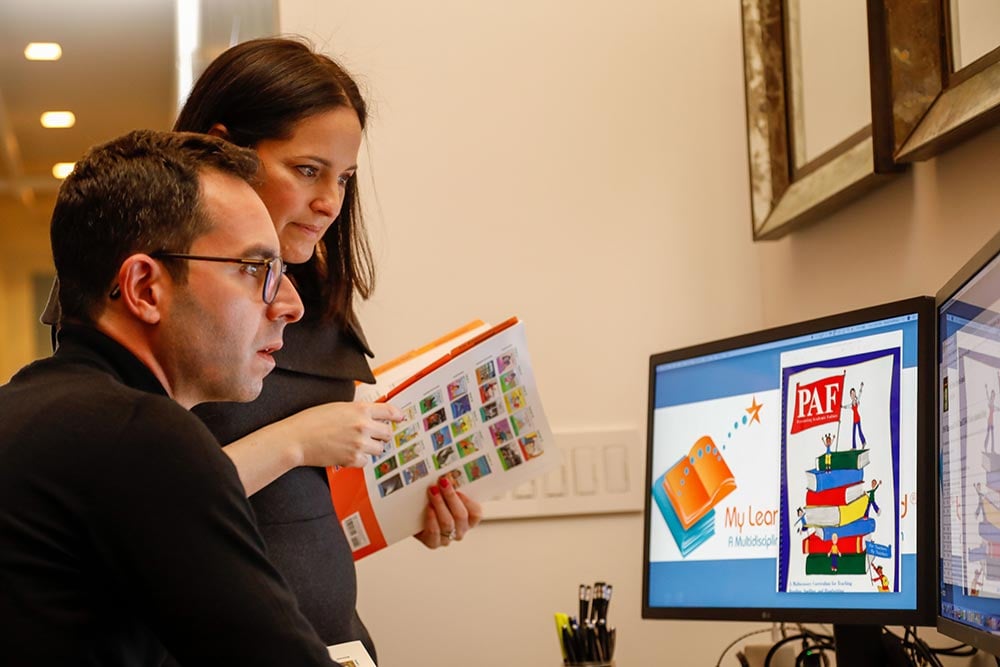 Preventing Academic Failure, or PAF, is a multisensory, Orton-Gillingham based reading intervention program that integrates reading, writing, and spelling. PAF was developed by Phyllis Bertin, Director of Reading at the Windward Teacher Training Institute, and Eileen Perlman, former Director of the Reading Initiative at The Churchill School and Center. The principles and practices of PAF are incredibly beneficial to students with dyslexia and language-based learning disabilities as well as younger students learning to read. The specific goals of the program, or intervention, are to give students the tools to read cohesively, write fluidly, and spell with ease. PAF was designed for classroom instruction but can be modified for private tutoring. While it is not a scripted program and strict set of rules, it is a carefully designed scope and sequence with specific methodologies and materials.
Preventing Academic Failure, or PAF, is a multisensory, Orton-Gillingham based reading intervention program that integrates reading, writing, and spelling. PAF was developed by Phyllis Bertin, Director of Reading at the Windward Teacher Training Institute, and Eileen Perlman, former Director of the Reading Initiative at The Churchill School and Center. The principles and practices of PAF are incredibly beneficial to students with dyslexia and language-based learning disabilities as well as younger students learning to read. The specific goals of the program, or intervention, are to give students the tools to read cohesively, write fluidly, and spell with ease. PAF was designed for classroom instruction but can be modified for private tutoring. While it is not a scripted program and strict set of rules, it is a carefully designed scope and sequence with specific methodologies and materials.
PAF explicitly and systematically teaches alphabetic principle, higher-level word analysis skills and comprehension strategies. The goal is to instruct with minimal frustration and maximum success for teachers and students alike, leading to mastery and enhanced self-esteem for each participating student. This multisensory approach is evidence-based practice and proven to support the struggling reader. There are explicit phonics lessons, an instructional scope and sequence, oral reading exercises, repeated readings, decoding, and integration of comprehension, writing, and spelling strategies. By taking each of these components into consideration and systematically planning instruction, struggling readers, writers, and spellers will begin to feel successful and excited about reading and writing. PAF includes an instructional approach to handwriting and encourages students to use Skywriting as a kinesthetic reinforcement.
A master teacher differentiates each lesson in his or her classroom or private tutoring sessions. The PAF program supports teachers in delivering differentiated lessons by incorporating multisensory practices. The multisensory approach is one that accesses the visual, auditory, and kinesthetic strengths of students within each lesson, providing them with three modalities to approach the literacy task at hand.
Written by: Editorial Team, My Learning Springboard, Inc.